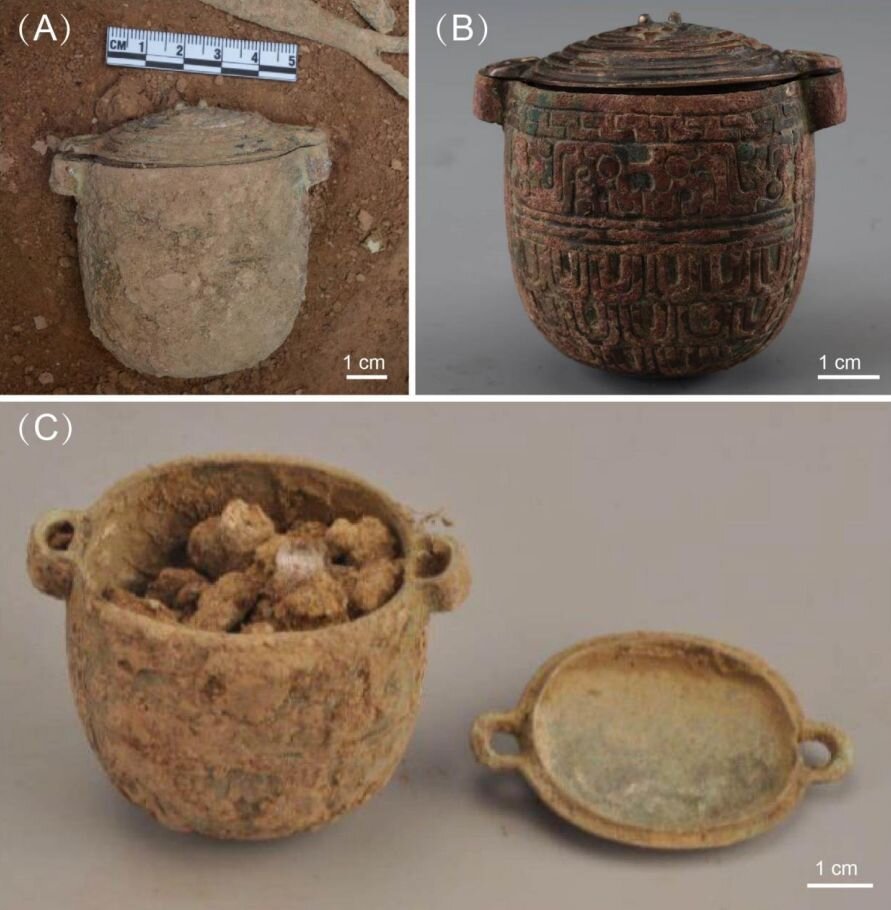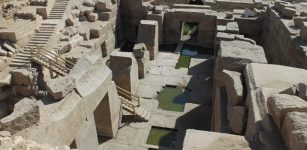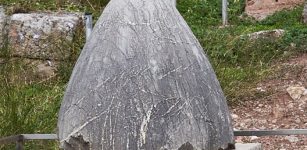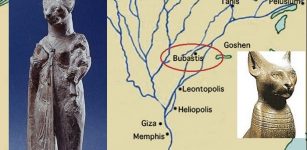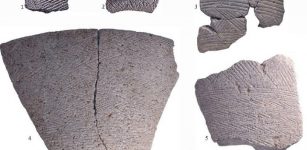2,700-Year-Old Face Cream For Men Found In Chinese Tomb
Jan Bartek - AncientPages.com - The history of cosmetics goes far back in time and the use of beauty products has by means been restricted to women. Men have long relied on different kinds of cosmetics.
We know for example that ancient Egyptians had several achievements in chemistry and cosmetology. They produced creams, perfumes, and facial colors. They created beautification techniques, and special soap to wash corpses as part of mummification.
The use of cosmetics was very important in ancient Egypt and makeup was used by both men and women.
Women have always highly regarded lipstick as the basic and most popular beauty tool of all time. Millennia ago, it covered up the imperfections of their appearance and emphasized the lips giving them a beautiful hue, and so it does today. Nail polish was used in 3,000 B.C. and the color of fingernails indicated social status in ancient China and Egypt.
The modern cosmetics industry is huge and products we can buy today cannot be compared with cosmetics used by our ancestors thousands of years ago, but maybe those ancient ingredients were not so bad at all. Sometimes, ancient ideas can be better or just as good as the new ones.
The tomb of the male nobleman where the pot of cream was discovered, located in the Liujiawa Site in Shaanxi Province. Credit: Dr Bin Han, University of Chinese Academy of Sciences, China
Ancient Egyptians were not the only ones who liked cosmetics. While excavating an ancient Chinese nobleman's tomb in Liujiawa Site in Shaanxi Province archaeologists discovered a 2,700-year-old face cream in a jar.
Artifacts discovered at the site have been dated to the "Spring and Autumn period", a time in Chinese history called the three-hundred-year period between 771 and 476 B.C.
The sealed container containing sig grams of the face cream was analyzed by and experts identified the residue was made of ruminant adipose fat combined with monohydrocalcite from cave moonmilk substance that has been used for skin whitening.
“It is called ‘moonmilk’ in the geological context and the residue was made of the moonmilk substance mixing with ox’s fat. The substance is white in color; the two together were used by ancient people for whitening their complexion,” Yang Yimin, the head of a research team at the University of Chinese Academy of Sciences, told the Global Times.
“According to mainly the burial objects that were discovered in the tomb, we investigated the face cream should belong to male aristocracies at that time,” Yang emphasized.
(A) the bronze jar in situ, (B) the decoration on the bronze jar after cleaning, (C) a large quantity of agglomeration of yellowish white lumps inside the bronze jar. Credit: Archaeometry (2021). DOI: 10.1111/arcm.12659
Given the discovery of the bronze container in Shaanxi, there were several other similar cosmetic objects that have been unearthed in regions such as north China’s Shanxi Province as well as in east China’s Shandong Province. Those containers were not only used by ancient aristocrats as a symbol to show their status, but they also epitomize the thriving cosmetic industry during the Spring and Autumn period, suggested by the fact that those objects were found in different areas of the country.
“Such bronze containers have been discovered in around ten more places in China. They together, symbolize the industrialized nature of cosmetics back in the ancient time,” said Yang.
See also: More Archaeology News
Obviously, poor people could not afford such luxury products back in those days, but this discovery shows the appreciation for cosmetics goes far back in time.
The archeological project has recently been published in the academic journal Archaeometry, titled “The rise of the cosmetic industry in ancient China: insights from a 2,700‐year‐old face cream”.
Written by Jan Bartek - AncientPages.com Staff Writer


